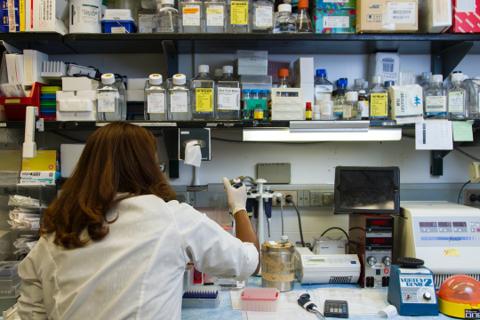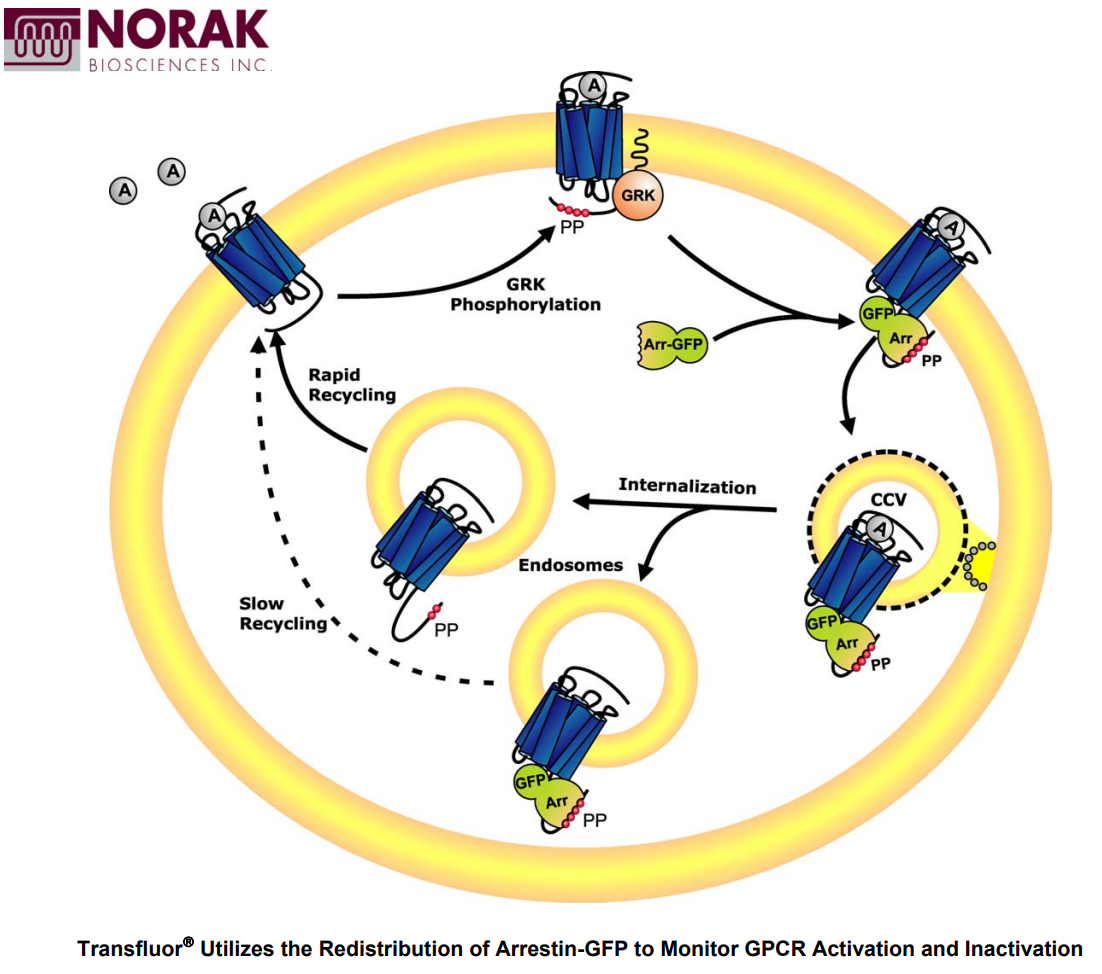Making Transfluor
Atto Pathway
Transfluor Assay from Atto Gentaur
Norak Biosciences, Inc. is a private biotechnology company based in Research Triangle Park, NC, utilizing its proprietary Transfluor® technology to become a world leader in the discovery and development of drugs that regulate G protein-coupled receptors (GPCRs).
We invite you to tour our website to learn more about Norak Biosciences, our technology and our discovery efforts.
Norak News...
Norak Biosciences Licenses Transfluor® to DCB [read more]
Norak Biosciences Acquires Broad Rights from European Transfluor® Patent [read more]
Norak Biosciences Delivers on an Agreement with Sumitomo Pharmaceuticals Co., Ltd. [read more].
Unique ransfluor® Presentations
2004
Hoffman - La Roche Presentation: High-Content Analysis Conference
Merck Presentation: High-Content Analysis Conference
Norak Presentation: High-Throughput Screening for Drug Discovery Conference
2003
AstraZeneca Presentation: Society for Biomolecular Screening 2003
Merck Presentation: Society for Biomolecular Screening 2003
Norak Presentation: Assays & Cellular Targets (ACT) Conference
Norak Presentation: Drug Discovery Technologies 2003 Conference
Norak Presentation: MipTec 2003 Conference
Hoffman - La Roche Presentation: Society for Biomolecular Screening 2003
Transfluor® Posters
Comparison of Compound Characterization with Transfluor® and AlphaScreen™
Development, Conduct and Results of Two High Throughput Screens Using Transfluor® Technology
Microtiter Plate Evaluation for Use with Cell-Based, High Content Imaging Systems
Multiplexing of Transfluor® Technology to Detect Responses Gs-,Gi- and Gq-coupled Receptors in the Same Well
Screening Orphan GPCRs in Stable Cell Lines with Transfluor® Technology
Transfluor® Technology: A Universal High-Content Screening Assay for G Protein-Coupled Receptors
Other Transfluor® Information
Arrestin Translocation Cartoon
Atto Bioscience Presentation: Norak's Transfluor® GPCR Assay on Atto Bioscience's Pathway HT™
Cellomics Application Note: GPCR Signaling BioApplication
Cellomics Poster: Ranking of ß2 Adrenergic Receptor Agonists and Antagonists Using a Cell-Based GPCR Signaling BioApplication
Cellomics™ Application Note: Transfluor® Technology for High-Content Screening of GPCRs
Cellomics™ Application Note: Analysis of GPCRs with the Spot Detector BioApplication and Transfluor® Technology
iCyte™/Transfluor® Application Note
iCyte™/Transfluor® Application Note (Japanese version by Olympus)
Olympus Presentation: Transfluor® Assay by iCyte™ Imaging Cytometer
Publications List: ß-arrestin Translocation
Q3DM Application Note: Analysis of GPCR Activity on the EIDAQ™ 100 High Throughput Microscopy System
Q3DM Application Note: Norak Transfluor® GPCR Assay – Q3DM EIDAQ™ 100 HTM Analysis
Transfluor I
Transfluor II

Today, there are nearly 200 GPCRs whose ligands and function are known representing a wide variety of physiologies. Due to the overwhelming variety of physiologies regulated, GPCRs have been the richest targets in history for drug discovery. It is estimated that nearly 60% of all prescription drugs on the market owe their activity in whole or in part to GPCRs.
While some natural ligands of GPCR have important therapeutic value (e.g., epinephrine, dopamine and adenosine), most GPCR drugs are synthetic ligands or derivatives that bind and either activate or block the receptor, so-called agonists and antagonists, respectively. Many if these compounds have pure stimulatory or inhibitory properties, while others elicit mixed activity including partial agonists or antagonists, inverse agonists, and allosteric modulators.
Despite a wide variety of marketed GPCR-based drugs, the functionally known receptors remain important targets for new and improved drugs. In addition, approximately 150 additional human GPCRs are believed to be important in disease states but their natural ligands have yet to be identified. These receptors are called orphan GPCRs. Orphan GPCRs present great opportunities for the discovery of new medicine to satisfy unmet medical conditions.
Norak Biosciences is utilizing its proprietary Transfluor® technology to advance the discovery of GPCR-based drugs. Transfluor, an advanced, cell-based, compound screening method universally applicable to known and orphan GPCRs, represents a breakthrough technology that bridges high throughput screening and high content screening. With Transfluor, Norak and its partners have successfully identified small molecule compounds that modulate various human GPCR in cell-based assays.

Gs Gi/o Gq/11 A2a adenosine A2b adenosine ß1-adrenergic ß2-adrenergic CRF1 corticotropin releasing factor D1 dopamine D5 dopamine FSH follicle-stimulating hormone Glucagon LH luteinizing hormone PTH1 parathyroid hormone
Beginner
$ 35 .00
/ month- Basic sales & marketing for up to 2 users
- Account & Sales management
- No customization
- No support
Professional
$ 65 .00
/ month- Complete CRM for any size team
- Access to all modules
- Limited customization
- Email support
Expert
$ 125 .00
/ month- Unlimited CRM power and support
- Access to all modules and features
- Unlimited customization
- 24/7 support





